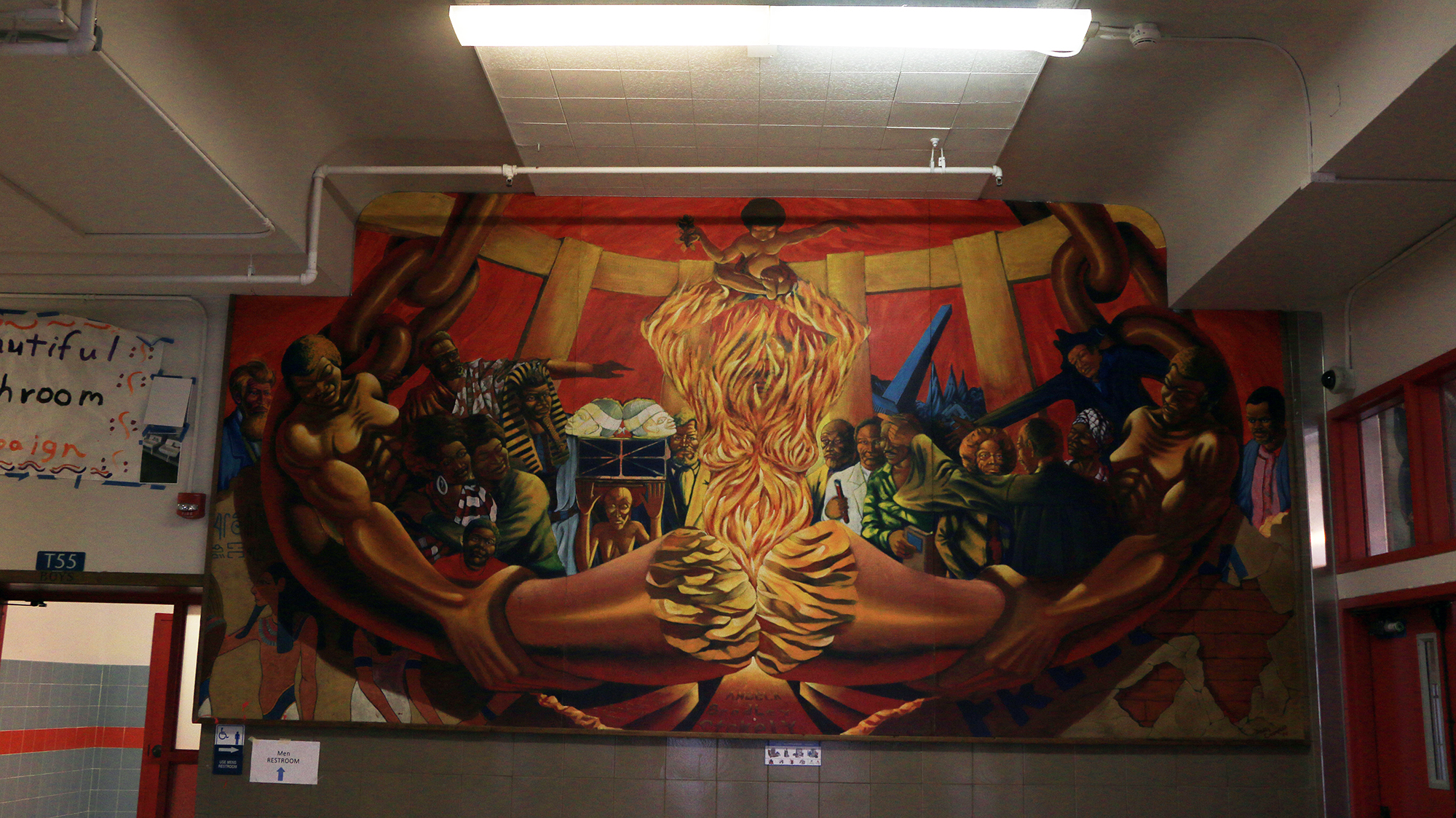Graves and architectural historian Christopher VerPlanck developed a citywide historic context statement on New Deal era buildings, artworks, open spaces and infrastructure. The project also includes city landmark nominations for three schools built or enhanced with WPA funds: Theodore Roosevelt Middle School, the Sunshine School (for students with disabilities) and George Washington High School, which have inspired protest campaigns about racial representation.
Photo: Amanda Law
The 1936 mural cycle “The Life of Washington,” by Victor Arnautoff show the first president's life and work in San Francisco's largest fresco project. Recently they’ve become the focus for protest by Indigenous and African American residents who point to depictions they argue demean their histories and present status. Our study recounts an earlier episode when similar critiques were leveled at the murals, and the SF Unified School District addressed them by commissioning new artworks.
Photo: Donna Graves
Arnautoff, an active leftist, included several scenes of African American workers. In the 1960s, the murals became a source of outspoken anger from students who found the depictions of enslaved African Americans shucking corn, picking cotton, and loading barges as servile and humiliating. The school's Afro-American Club convinced the SF Unified School District to commission response murals by the young artist Dewey Crumpler. His series of paintings, Multi-Ethnic Heritage: Black, Asian, Native/Latin American, were installed in 1974 (below).
Photo: Amanda Law
The Life Washington (detail). Photo: Donna Graves
This mural detail, Arnautoff’s own critique of what we would now call colonial settlerism, was the catalyst for recent protests against the murals.



